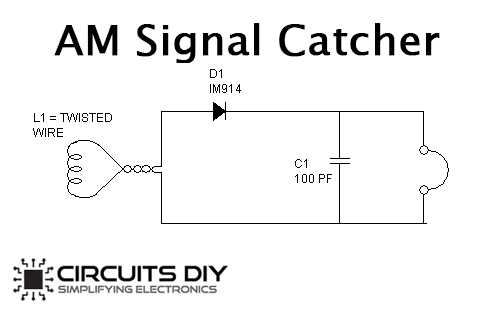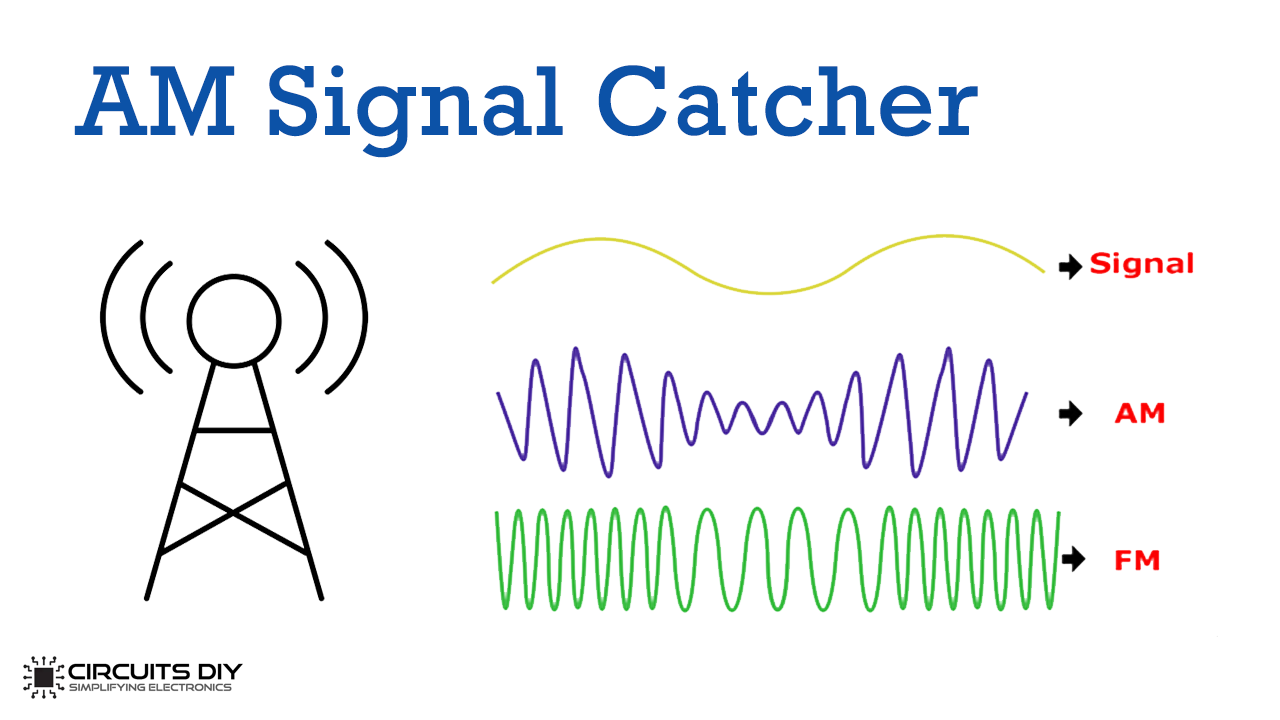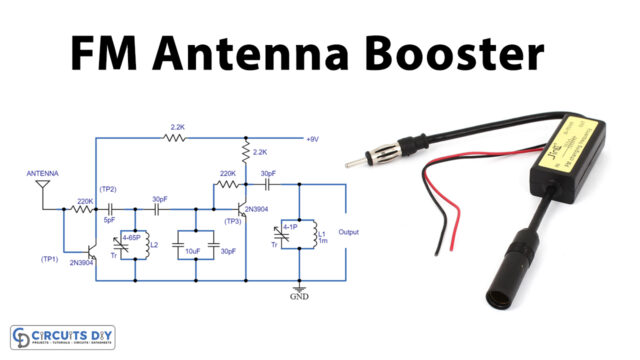In this DIY, we are going to demonstrate a project of AM Signal Catcher in detail. Basically, amplitude modulation (AM) is a modulation strategy utilizes in electronic transmission. Most generally for transmitting data via a radio carrier wave. Moreover, AM was the earliest modulation strategy utilizes for transmitting sound in radio broadcasting.
However, it was created during the primary quarter of the twentieth century starting with Roberto Landell De Moura and Reginald Fessenden’s radiotelephone explores in 1900. Moreover, this is likewise the AM signal catcher circuit utilizes to catch the AM signals. In general, the amplitude (signal quality) of the carrier wave fluctuates with respect to that of the message signal being transmitting.
Hardware Components
Circuit Diagram

Circuit Operation
Accordingly, this is a basic and simple method to build a circuit of AM modulation monitoring for HAM transmitters. You don’t need to make any connection with the transmitter, However, just you need to do is that place the coil L1 close to the last tank of receiving wire matching inductor until you hear the signal in the earphones.
The circuit is straightforward containing just four sections. L1 = coil 3 turns on 1.5-inch diameter former utilize any gauge wire.
In amplitude modulation, the amplitude or quality of the carrier oscillation fluctuates. For example, in AM radio communication, a continuous wave radio-frequency signal (a sinusoidal carrier wave) has its amplitude regulated by a sound waveform before transmission. The sound waveform alters the amplitude of the carrier wave and determines the envelope of the waveform.
Applications and Uses
- AM is used in compact two-way radios, citizens band radio, VHF aircraft radio, and in PC modems as QAM.
- It is regularly used to refer to mediumwave AM radio communications.
- AM Signal Catcher is used to catch the AM signals.













